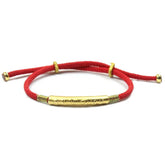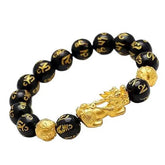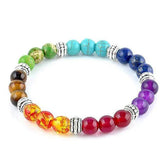7 Methods to Identify Real Raw Aquamarine Stone
Aquamarine Stone in its raw form is a captivating gemstone renowned for its serene blue hue and calming properties. Authenticity is crucial when identifying any gemstone, including aquamarine. Raw aquamarine specimens exhibit diverse appearances, making it challenging to differentiate between genuine stones and imitations or synthetics. This article delves into several methods and techniques aimed at assisting you in verifying the authenticity of raw aquamarine.
Understanding Aquamarine
Aquamarine belongs to the beryl family of minerals, alongside emerald and morganite. Its name originates from Latin, combining "aqua" and "marina," which translate to "water of the sea," evoking its enchanting blue color reminiscent of the ocean. Aquamarine typically displays shades ranging from light blue to greenish-blue, with the most valuable pieces showcasing a vibrant, deep blue hue.
How to Tell If the Raw Aquamarine Stone Real or Fake?
1. Check the Luster
To assess the luster of an aquamarine crystal, start by positioning yourself in a well-lit environment, ideally with natural light. Hold the crystal in your hand and rotate it slowly to allow the light to reflect off its surface. Observe how the light interacts with the stone.
Authentic aquamarine typically displays a vitreous luster, appearing glassy and shiny. If the stone reflects light with a waxy, dull, or greasy sheen, it may not be genuine.
Keep in mind that the quality of the luster can be influenced by the stone's cut or finish, so it's helpful to compare it with known examples or seek advice from an expert if you're uncertain. Always ensure the crystal's surface is clean and free from oils or dirt before making your assessment, as residues can alter how the luster appears.
2. Inspect Transparency
Aquamarine is renowned for its transparency, enabling light to permeate the crystal and produce a luminous glow. When examining a raw aquamarine specimen against a light source, observe the extent to which light passes through the stone. Authentic aquamarine exhibits high transparency, typically showing minimal or no visible inclusions or cloudiness. Stones that appear cloudy or opaque may be synthetic or imitation aquamarine.
3. Test Hardness
Aquamarine ranks between 7.5 to 8 on the Mohs scale of hardness, indicating its durability and resistance to scratching. To test the hardness of a raw aquamarine specimen, attempt to scratch it with a harder material like a quartz crystal or a steel nail. Authentic aquamarine should not readily scratch, whereas softer materials might leave visible marks or scratches on the surface of synthetic or imitation aquamarine.
4. Compare Specifc Gravity
To verify the authenticity of an aquamarine crystal based on specific gravity, you'll need a hydrostatic balance or a similar device capable of measuring specific gravity. Specific gravity measures the ratio of a substance's density to the density of a reference substance, often water for solids.
Begin by weighing the aquamarine in air using a precise scale to determine its weight in grams, known as the dry weight. Next, suspend the aquamarine in distilled water, ensuring it is fully submerged and not touching any surfaces. Record the weight while it is submerged, known as the wet weight.
Genuine aquamarine typically exhibits a specific gravity ranging between 2.68 and 2.74. If your calculated specific gravity falls within this range, it strongly suggests the stone is authentic aquamarine. However, if the specific gravity significantly deviates from this range, the stone may be a different mineral or an imitation.
5. Examine For Flaws
To inspect an aquamarine crystal for imperfections, begin by ensuring the stone is thoroughly clean and free from any external debris or marks. Hold the stone up to a light source or place it against a white background. As you closely examine the aquamarine, authentic stones may exhibit natural inclusions or flaws, which can manifest as tiny threads, feathery fractures, or minute bubbles.
Exercise caution if the aquamarine appears excessively flawless without any visible inclusions. A flawless appearance could indicate that the stone is either a high-quality synthetic or another form of imitation. Conversely, if you observe large bubbles or swirling patterns inside the stone, it may suggest that it is made of glass or plastic.
6. Check Refractive Index
The refractive index measures how light bends or refracts when it passes through a gemstone. Genuine aquamarine generally exhibits a refractive index ranging from 1.567 to 1.590, which can vary based on its composition and origin. Using a refractometer, you can determine the refractive index of a raw aquamarine specimen and compare it against established values for authentic aquamarine.
7. Conduct a Heat Test
To perform a heat test on an aquamarine crystal, first select a safe and controlled environment free from flammable materials. Ensure the stone is clean and devoid of any external dirt or oils.
Hold the aquamarine between your fingers for about a minute to gently warm it with your body heat. Then, swiftly transfer it to the palm of your other hand. Genuine aquamarine, known for its good thermal conductivity, will quickly dissipate the heat and feel cool against your skin. In contrast, imitations like glass or plastic will retain warmth longer, feeling warmer or neutral against your skin.
Exercise caution during this test as sudden temperature changes can potentially damage both genuine and imitation stones. While the heat test can provide some insights, it should not be relied upon solely for definitive identification.
Wrapping Up
Identifying the authenticity of a raw aquamarine stone involves meticulous examination and testing of its color, transparency, hardness, inclusions, specific gravity, and refractive index. By employing these methods and techniques, you can accurately discern genuine aquamarine specimens from synthetic or imitation stones. Whether you're a gemstone enthusiast, jewelry collector, or crystal healer, mastering the ability to verify raw aquamarine ensures that you can appreciate its beauty and energy with certainty and assurance.








Leave a comment
All blog comments are checked prior to publishing